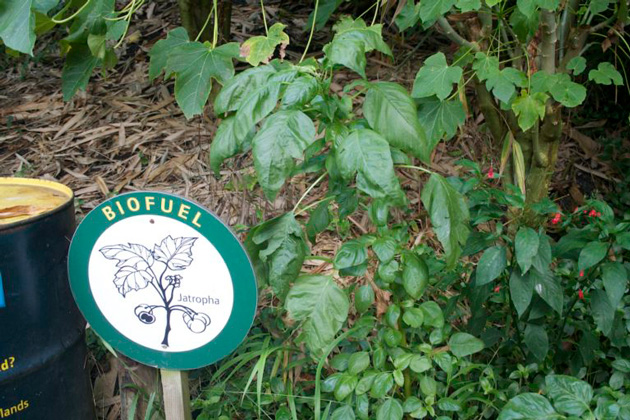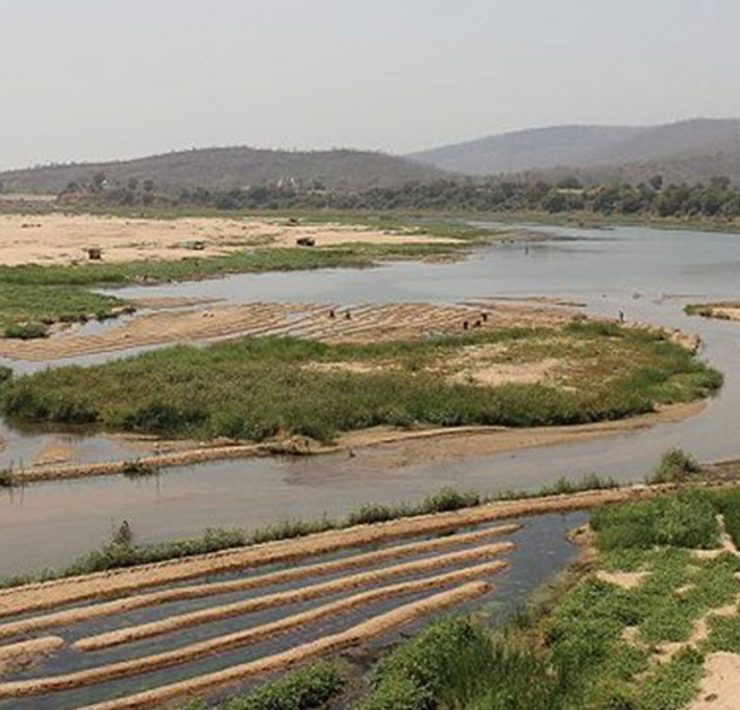Why the plane could, yet the country can’t, run on biofuel?

- India targets to reduce carbon emissions by 20,000 tonnes by blending 10 million litres of ethanol in the fuel. However, the availability of biomass for ethanol production is far less than the demand.
- As targets under the National Biofuel Policy were not achieved, the government of India revised the national policy in 2018 but without enough support, the policy is struggling to take off, argues Monika Mandal in this commentary.
- Given the production capacity of biomass by the country, the available technology and the incentives and investment might not be able to push forward the biofuel as part of the policy targets. To make the policy successful India needs to integrate the economic, environment and market aspects of biofuel production.
In August 2018, SpiceJet airline made history in the Indian transportation sector. A journey of about 285 kilometres from Dehradun (in Uttarakhand) to New Delhi was completed with a fuel which had its origins in the farms of Chhattisgarh. A successful flight of about 45 minutes added India in the list of few nations (like the US and Australia) who have used biofuel for flying airplanes.
That flight did not only take 20 people to the sky but also inflated the hopes of the Indian biofuel sector.
Rapid urbanisation and an increasing population compel India to accommodate more vehicles on the roads, which indirectly means more crude oil imports and carbon emissions. India’s smart move to tackle this dual problem was to launch a policy which could reduce the crude oil import along with handling the environmental crisis. Biofuel, which is a mixture of ethanol (sourced from plants and other wastes) with petrol or diesel is much cheaper than unblended fuel and emits less carbon.
The biofuel-propelled flight was not a sudden development. The history of ethanol production in India can be traced back to 1948, with the enactment of the Indian Power Alcohol Act. During the 1970s, research was conducted to find the feasibility of ethanol and in 2002, a notification mandated the blending of five percent ethanol with petrol by Oil Marketing Companies (OMCs) in nine states and four union territories of the country. In 2008, the National Biofuel Policy (NBP) was adopted in an effective manner to regulate the market with standard legal guidelines. The NBP 2008 targeted to mix 20 percent ethanol in petrol and 20 percent biodiesel in diesel by 2017.
A few days before the SpiceJet plane took flight in 2018, Prime Minister Narendra Modi gave a speech on World Biofuel Day on August 10. He emphasised that biofuel is the link between India’s economics and environment and mentioned that the government targets to save more than Rs 200 billion (Rs. 20,000 crore) in foreign exchange by biofuel blending. Apart from this, focus on employment generation, increasing farmer’s income, rural development painted a very progressive image of biofuels.
Nevertheless, India’s dream of carbonless growth and reduced imports of fossil fuel would have been easy to achieve — if biofuel blending was as convenient.
What’s stopping the biofuel business?
In 2017, India was mixing only 2 percent and 0.1 percent of ethanol and biodiesel to petrol and diesel respectively. Underperformance from 2008 and futuristic hopes led India to set up a new target. The NBP 2018 promised 20 percent ethanol mixing in petrol and five percent biodiesel in diesel by 2030.
In a market where there are huge subsidies for fossil fuel, the entry of renewable energy is difficult, if not impossible. Fossil fuel has a history of over 200 years and subsidies as high as seven times compared to the renewable sector. It is difficult for any renewable energy to blossom without appropriate support and encouragement in such an environment.
Both the targets set in 2002 and 2008 failed, mainly due to the insufficiency of biomass. The 72 seater Bombardier Q400 aircraft of SpiceJet could reduce the carbon emission by 15 percent than usual by using 350 kilograms of biomass. India targets to reduce the carbon emission by 20,000 tonnes by blending 10 million (one crore)litres of ethanol in the fuel. However, the availability of biomass for ethanol production is far less than the demand.
The countries which are pioneers in biofuel blending (like USA and Brazil) use biofuel sourced mainly from sugarcane, palm oil and other 1G, i.e. edible biomass sources. However, Jatropha and agricultural wastes (2G and 3G sources) are the mascots of India’s biofuel plans. After close consideration and acute analysis, India promoted Jatropha on wastelands and other agricultural waste for biofuel production to save the debate of food versus fuel.

Jatropha was procured from about 500 farmers for the SpiceJet flight on August 27, 2018. However, even after the state and central government’s support and incentives to promote crop production, the production of biomass has failed to meet the demands of the country. One of the reasons is the lack of research for the development of high-yielding, drought-tolerant Jatropha seeds. Reports suggest that only 0.5 million hectares are currently under Jatropha cultivation. The Indian transportation sector is expected to consume about 117 million litres and 42 million litres of diesel and petrol, respectively in 2030. Taking that into consideration, to reach the targets by 2030, India would need to increase production by 22 percent.
The non-availability of the biomass is also accredited to the seasonal availability of biomass and unreliable biomass supply chain. Ajay Lahane has been associated with green energy production and biomass supply chain since 2011. Lahane, who runs a startup named EcoOpus Agri Ventures Private Limited (ECOOPUS) states that “the biomass supply chain has been totally ignored by the policy which makes the proper availability of the biomass difficult and hence the refineries would struggle to make the ethanol production economical and efficient.”
Biomass refineries not only struggle with the procurement of the efficient biomass but also with making the whole process economically sound. India’s focus on advanced biofuels demands expensive and advanced technology along with huge investments in research and development. The pace with which the biofuel industry is shaping up is very slow. Following India’s targets of biofuel generation from waste and crop residues induce more uncertainties. India is lagging with respect to the necessary time to design and construct commercial-scale advanced biorefineries.
This business cannot be just usual
India’s biofuel policy is a sunrise sectoral industrial policy which focuses on supporting and encouraging the entry of newcomers in the green space. To save the industry from external and market shocks, import and export of biofuel is prohibited in the country and domestically produced biodiesel is exempt from taxes and duties however there is a dearth of additional incentives for biofuel blenders and retailers. Though India’s jump to advanced biofuel is laudable, the technology and efficiency of such biorefineries are still in the nascent stage.
Focusing on the private players, the government has also committed to viability gap funding of up to 40 percent for infrastructure development. The total amount committed is Rs. 50 billion (Rs. 5,000 crore). However, this level of funding is too small to support 2G/ 3G biofuel refineries, considering that development of one 100 kilolitres per day (klpd) bio-refinery will require around Rs. eight to nine billion (Rs.800 – 900 crore) capital investment.
After biorefineries, comes the stage of retail marketing. The final blending of ethanol with fossil fuel is done by the public and private sector Oil Marketing Companies (OMCs). The six public sector OMCs – Indian Oil Corporation Ltd (IOCL), Hindustan Petroleum Corporation Ltd (HPCL), Bharat Petroleum Corporation Ltd (BPCL), Numaligarh Refinery Ltd (NRL), Mangalore Refinery & Petrochemicals Ltd (MRPL), Bharat Oman Refineries Ltd (BORL) – along with some private companies like Reliance, Essar and Shell are responsible for the retail marketing. It is estimated that the OMCs are in the process of setting up 12 2G bio refineries with an investment of around Rs. 100 billion (Rs.10,000 crore). However, this development would not translate into much progress without proper infrastructural investment in the rural areas, proper marketing of biofuels and supply chain management.
Mistakes are an inevitable and inescapable part of green industrial policies. In fact, too few mistakes are a sign of underperformance. Efficiency, effectiveness and legitimacy are the components required to make a green project successful. Missing any one of these interrelated components might fail the policy. What is needed, is a set of mechanisms that recognises errors and revises policies accordingly. The regulator bodies like the National Biofuel Committee have to guide the policy better.
Given the production capacity of biomass by the country, the available technology and the incentives and investment might not be able to push forward biofuel as part of the policy targets. Scholars have estimated with substantial policy support, India might reach the target of about six percent blending with petrol and about four percent blending with diesel by 2030 using advanced biofuels.
The 25 percent of ethanol blending for the SpiceJet flight was a one time stunt, which India performed very well and gained global attention. However, to make the policy successful India needs to integrate the economic, environment and market aspects of biofuel production. Finance is always scarce for green industries and this is where the public sector has to jump in and uplift the renewable sector by attracting private investment.
This article first appeared on Mongabay.







